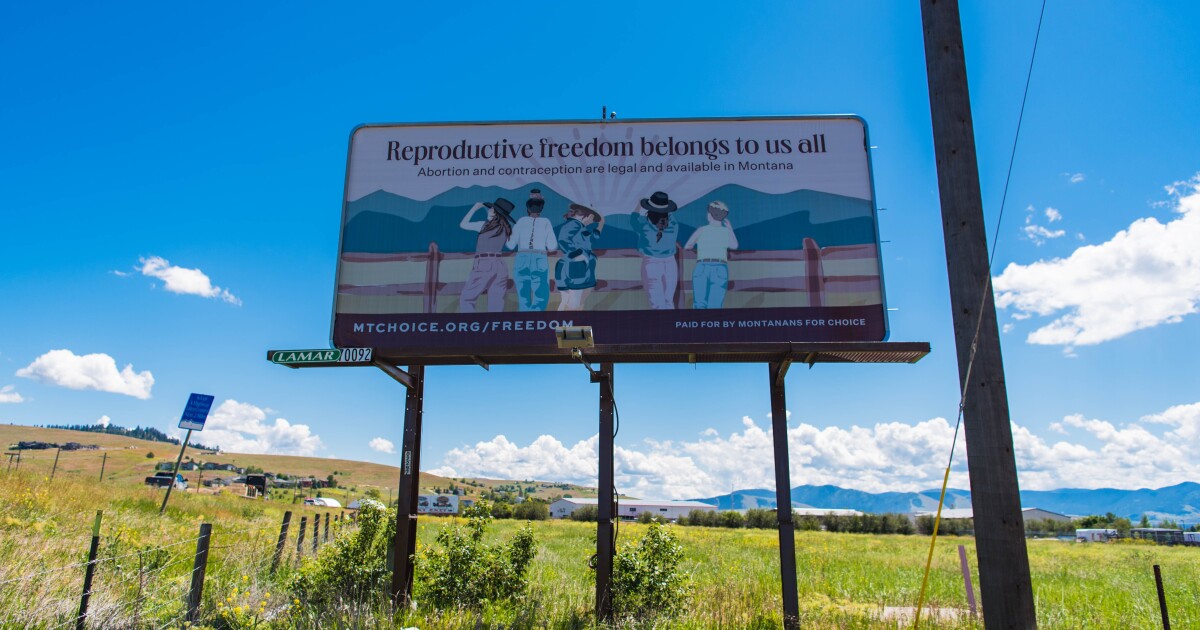Advanced practice registered nurses can provide abortion care in Montana following a unanimous order by the state Supreme Court issued Friday.
Abortion providers said the decision is a victory for abortion rights in Montana and will expand access to health care in the state, making patients safer.
The state Department of Justice, which defended the 2005 law that aimed to limit who can provide abortion care to only physicians and physician assistants (PAs), called the court “out of touch” and said the case was not about the right to access an abortion but standards of care.
The lawsuit decided Friday was first filed in 2018 by Helen Weems, who operates All Families Healthcare in Whitefish, and a provider identified as Jane Doe, a licensed registered nurse with a certification in the advanced practice of nurse midwife. Since that year, the state has been under a preliminary injunction blocking the law.
People are also reading…
More than a year ago, Lewis and Clark County District Court Judge Mike Menahan ruled abortion care provided by advanced practice registered nurses, or APRNs, is safe and the 2005 law was unconstitutional because it interfered with a woman’s right to seek an abortion from the health care provider of her choice. The Supreme Court held a hearing in the case last year.
Friday’s ruling cited the landmark state Supreme Court’s Armstrong decision, which found the Montana Constitution’s right to privacy guarantees a person’s right to a pre-viability abortion from the qualified health care provider of their choice.
Even after the U.S. Supreme Court struck down the Roe decision last year and overturned the federal right to access an abortion, the procedure remained legal in Montana under the state document’s long-recognized stronger right to privacy.
The state, through the Montana Department of Justice, appealed the district court’s ruling to the Montana Supreme Court. The high court, in its 30-page opinion Friday, said early abortion care was safe, advanced practice registered nurses (APRNs) were more than qualified to provide the procedure, and the state’s ability to regulate for the health and safety of its citizens did not supersede the constitutional right to access an abortion.
“This is a resounding victory and an unequivocal win for the people of Montana. … The Montana Supreme Court clearly and unequivocally ratified the principle that our state constitutional right to privacy protects the right to an abortion in Montana. That cannot be disputed,” said Alex Rate, a lawyer for ACLU of Montana that represented Weems. “ … That constitutional right guarantees an individual’s ability to seek medical care from a health care provider of their choice, and that part’s important here in Montana where we live in a geographically large state and it’s not always easy to travel to get the health care that you need.”
Emilee Cantrell, a spokesperson for the state Department of Justice, panned the ruling, as well as the court, in a statement issued Friday.
“The state Supreme Court has become disgracefully radicalized and out of touch with Montanans. This case was not about the right to abortion — it was about whether women have a right to an elevated standard of care during an abortion,” Cantrell wrote. “The Montana Supreme Court said ‘no’ and lowered the standard of care set by the Legislature, effectively constitutionalizing the right of unqualified individuals to perform unregulated abortions. This decision is a loss for Montana women who will be less safe because of the state Supreme Court.”
In the order written by Justice Laurie McKinnon and signed by the other six justices, the court said the state “failed” to prove its arguments on several points.
That included not proving that abortions done by APRNs were riskier than those performed by physicians or physician assistants. The state also didn’t show why APRNs should be restricted from providing abortions or any associated health risks.
While the court in this decision recognized the state has general and inherent “police power” to regulate the health and safety of its citizens, the record showed no evidence APRNs providing abortion care presented any medical risk to women.
“The state’s argument is detached from the overwhelming evidence presented to the district court that abortion care is one of the safest forms of medical care in this country and the world, and that APRNs are qualified providers,” the order reads. “ … There is no medically recognized bona fide health risk for APRNs to perform abortion care, much less one that is clearly and convincingly demonstrated.”
The court also pointed out that all parties in the case agreed managing a miscarriage is identical or nearly so to early abortion care, but the state did not argue it was unsafe for APRNs to provide that care.
“The court pointed to a logical fallacy in the state’s argument. … How can the state say it has a compelling interest to regulate abortion when identical procedures are not subject to the same onerous requirement?” Rate said.
APRNs also regularly provide care far more advanced than early abortions, the court noted, such as neuraxial anesthesia, central line insertions and intubations. They can also prescribe dangerous and addictive drugs that pose far more risk than abortion medications.
The court also pointed to studies showing the risk of early abortion complications ranging from minor at 1.32% to major at 0.05% is far less than other common procedures such as wisdom teeth removal at 7% and tonsillectomies at 8-9%.
The ruling also cited safety repercussions associated with a lack of abortion care, highlighting evidence that delays in accessing care can force women to seek later-term abortions, which can come with higher risks, more costs and possibly the inability to get a medication abortion.
“Access to abortion care in Montana is the difference between obtaining quality care or no care at all, especially for patients who might otherwise ‘time out’ of early abortion care because their pregnancy extended past a certain gestational age, which can result in safety repercussions for the patient,” the court wrote.
One doctor who testified on behalf of Weems and Doe said research has established the median distance a patient must travel for early abortion care in Montana increased by nearly 50 miles between 2011 and 2014, the court wrote. That year the average distance traveled was 180 miles. In 2017, more than 90% of the state’s counties, home to half of the Montana population, had no abortion provider.
Other litigation
Republicans in the state have aimed to limit access to the procedure through several laws passed this legislative session and in 2021. Several of those bills are under litigation now, as is an administrative rule from the state health department that in addition to requiring preauthorization for abortions would limit the procedure to only be provided by a physician for those covered by Medicaid. Lawmakers passed a law earlier this year to codify the same policy.
“(Friday’s order) bodes well for the myriad lawsuits that are challenging the abortion restrictions that were adopted by the 2023 Montana Legislature,” Rate said. “All of that sends a clear message the state can’t legitimately defend these patently unconstitutional laws.”
Holly Michels is the head of the Montana State News Bureau. You can reach her at holly.michels@lee.net






























